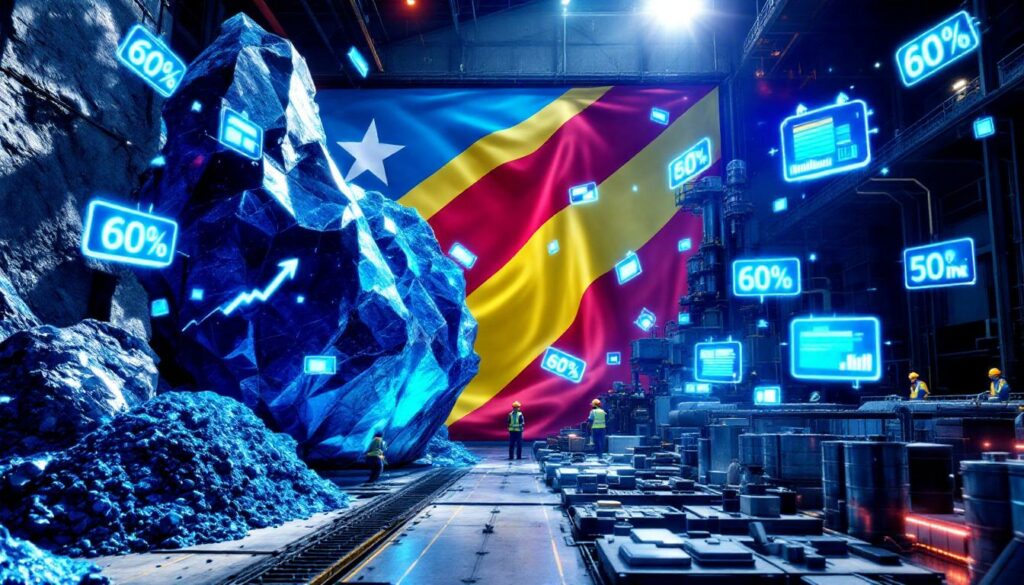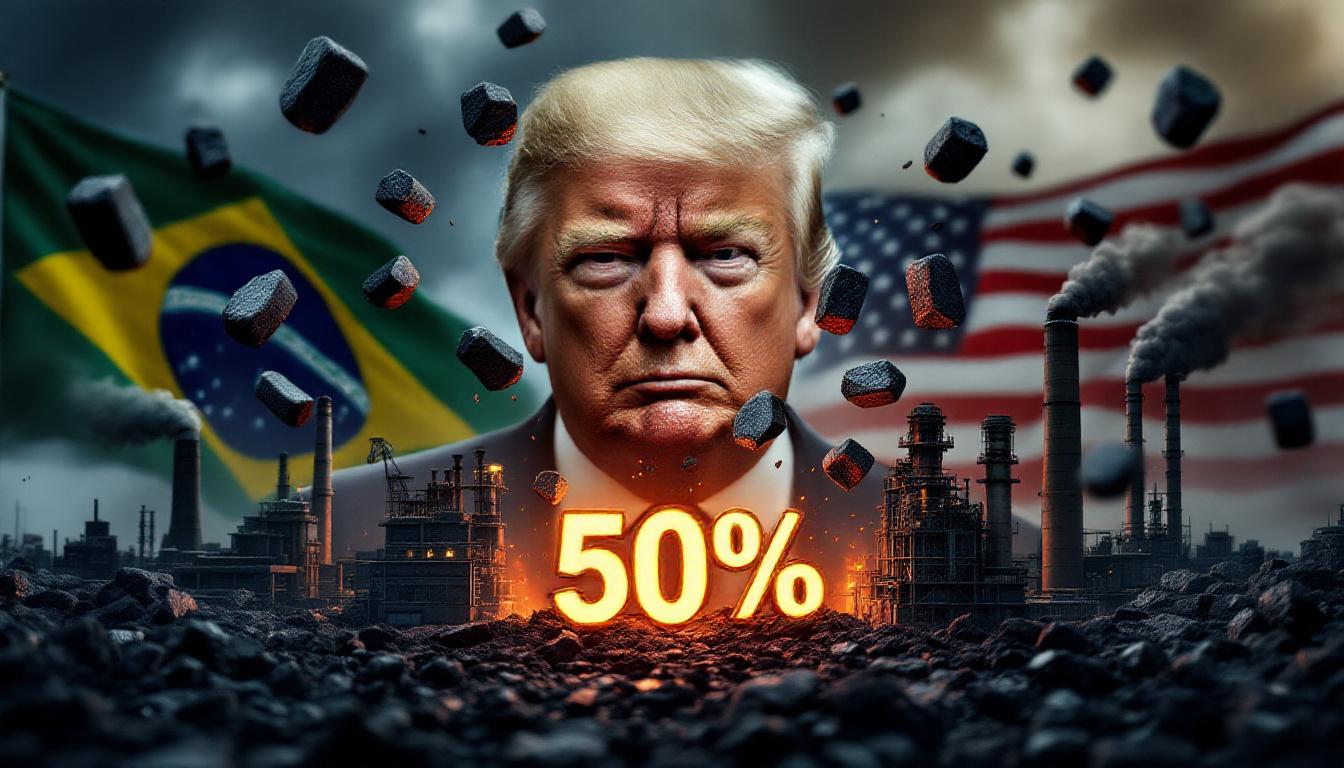How is Congo Reshaping the Global Cobalt Market?
The Democratic Republic of Congo (DRC) is implementing a bold strategy to stabilize cobalt prices while encouraging domestic processing of this critical battery metal. As the dominant force in global cobalt production, accounting for approximately 75% of worldwide supply, Congo's recent export restrictions have sent shockwaves through international markets and supply chains.
The country's approach represents a significant shift from being merely a raw materials exporter to establishing itself as a key player in the value-added processing sector. This transformation comes at a critical time when the global demand for critical minerals & energy transition continues to grow despite recent market volatility.
Congo's Cobalt Export Ban: Timeline and Impact
The DRC's export restrictions have unfolded in strategic phases:
- February 2025: Initial four-month export ban implemented
- June 2025: Ban extended for an additional three months
- Market response: Benchmark cobalt prices have risen nearly 60% since implementation
- Hydroxide prices: More than doubled according to Fastmarkets data
These dramatic price movements illustrate the outsized influence Congo wields in the cobalt market. Before the ban, prices had fallen to historic lows below $10 per pound, creating unsustainable market conditions for both miners and the Congolese economy.
"The market had become completely unsustainable. No producer could operate profitably at those price levels," notes industry analyst Simon Carter at Metal Insights.
Why Did Congo Implement the Cobalt Export Ban?
Market Correction and Price Stabilization
The Congolese government implemented the ban primarily to address several critical issues affecting the cobalt market:
- Oversupply crisis: A period of what Gecamines Chairman Guy-Robert Lukama described as "totally insane" supply growth led to severe market imbalance
- Inventory buildup: More than 12 months of cobalt inventory accumulated outside Congo, creating a supply overhang
- Price collapse: Benchmark prices had fallen to unsustainable levels below $10/lb
- Processing investment barrier: Low prices made domestic refining investments economically unviable
According to Gecamines Chairman Guy-Robert Lukama, "No one can invest in a refinery in the country because the price was not sustainable." This statement highlights Congo's strategic objective to move up the value chain rather than remain solely a raw material exporter.
Finding the Right Price Balance
Congo's strategy aims to achieve a delicate balance in the cobalt market:
- Not seeking extreme highs: The country doesn't want a return to peak prices above $40/lb seen in 2018 and 2022
- Targeting sustainable levels: Seeking prices that make domestic processing economically viable (estimated at $15-25/lb)
- Market stabilization: Addressing extreme volatility that hampers investment planning
Mining economist Dr. Patricia Nkunku explains: "What Congo is seeking isn't simply higher prices, but rather predictable prices that enable long-term planning. The extreme volatility we've seen in recent years benefits nobody."
How Has the Ban Affected Global Supply Chains?
Disruption to Major Producers and Markets
The export restrictions have created significant ripple effects throughout the global cobalt supply chain:
- CMOC impact: China's CMOC Group, which produces over 40% of world cobalt, declared force majeure on hydroxide deliveries
- Stockpiling challenges: Miners continue to extract cobalt while stockpiling it domestically, creating logistical pressures
- Chinese imports: China's imports of cobalt intermediates dropped over 60% in June 2025 compared to May
- Processing bottlenecks: The ban has highlighted the concentration of cobalt processing in China
Other major producers affected include Glencore Plc and Eurasian Resources Group Sarl, both of which operate significant assets in Congo with Gecamines as a minority partner.
Supply Chain Reconfiguration
The ban has accelerated efforts to diversify cobalt supply chains globally:
- Recycling initiatives: Battery recycling process companies have reported increased investment interest
- Alternative sourcing: Projects in Australia, Canada, and Indonesia have seen renewed attention
- Processing innovations: Research into more efficient cobalt extraction and refining methods has intensified
"What we're witnessing is a fundamental restructuring of the cobalt supply chain," notes minerals supply chain expert Wei Zhang. "Congo's actions have forced the industry to confront its overdependence on a single source."
What Are Congo's Long-Term Cobalt Market Objectives?
Promoting Domestic Processing and Value Addition
Congo's strategic vision extends beyond short-term price stabilization to include:
- Local refining capacity: Encouraging investment in domestic processing facilities
- Value chain participation: Capturing more of the economic benefits from its mineral resources
- Employment creation: Developing a skilled workforce for higher-value activities
- Technology transfer: Building technical capabilities within the country
The government has outlined plans to require mining companies to process at least 30% of extracted cobalt domestically by 2030, a significant increase from current levels.
Diversifying Global Supply Chains
The Congolese government has expressed interest in ensuring cobalt is "available for everyone" rather than having the world "dependent on one jurisdiction" – a clear reference to China's dominance in cobalt processing.
This aligns with ongoing discussions between Congo and the United States regarding a US-Congo strategic partnership to increase American investment in Congo's critical mineral resources, including copper, cobalt, lithium, and tantalum. President Donald Trump's administration is actively working to reduce China's control over these strategic materials through Trump's critical minerals order.
"We want multiple partners, not a single dominant one," a senior Congolese mining official stated. "The goal is balanced development that benefits Congo first and foremost."
What Might Congo's Post-Ban Strategy Look Like?
Potential Long-Term Market Management Approaches
Congolese officials are considering several options for when the current ban expires:
- Export quotas: Lukama acknowledged that a quota system "could make sense" to balance the market
- Price floor mechanisms: Establishing minimum acceptable price levels through strategic selling
- Strategic reserves: Potentially managing a national stockpile to buffer market volatility
- Joint ventures: Encouraging partnerships that include processing commitments
The government has emphasized a "pragmatic" approach to achieving its objectives while balancing various stakeholder interests.
Geological Factors Influencing Strategy
Congo's strategy is partially informed by its unique geological advantages:
- Superior grade deposits: Congolese cobalt typically has higher concentrations than competing sources
- Co-production efficiencies: Most cobalt is recovered as a by-product of copper mining, creating cost advantages
- Resource longevity: Current reserves suggest decades of viable production at current rates
These factors give Congo significant leverage in implementing its market strategy, as alternative sources typically face higher production costs and technical challenges.
What Are the Risks of Congo's Cobalt Strategy?
Potential Market Responses and Challenges
While Congo's approach has successfully increased prices in the short term, several risks could undermine its long-term effectiveness:
- Substitution acceleration: Excessively high prices could accelerate battery manufacturers' shift to cobalt-free technologies
- Alternative supply development: Increased investment in cobalt projects outside Congo, such as the cobalt blue expansion in Australia
- Geopolitical tensions: Potential conflicts with major consuming nations, particularly China
- Investment uncertainty: Regulatory unpredictability may deter some investors
Analysts have specifically warned that overly stringent controls and dramatically higher prices could hasten the transition of electric vehicle battery manufacturers toward cobalt-free chemistries like lithium iron phosphate (LFP).
Regulatory and Governance Considerations
The success of Congo's strategy depends heavily on effective implementation and governance:
- Transparency challenges: Ensuring clear, consistent application of export restrictions
- Smuggling concerns: Preventing unauthorized exports through neighboring countries
- Artisanal mining integration: Addressing the large informal mining sector's role
- Corruption risks: Maintaining integrity in enforcement mechanisms
"The policy itself is sound," notes mining governance expert Jean-Paul Mbuyi, "but its effectiveness depends entirely on implementation. Congo's history of governance challenges cannot be ignored when assessing potential outcomes."
How Does Cobalt Fit into Congo's Broader Economic Strategy?
Critical Minerals as Economic Development Drivers
Congo's approach to cobalt management reflects a broader strategy to leverage its mineral wealth for economic development:
- Resource nationalism trend: Following global patterns of producer countries seeking greater control and benefits
- Industrial policy focus: Using mineral resources to build manufacturing capacity
- Economic diversification: Reducing dependence on raw material exports
- Strategic partnerships: Engaging with multiple international partners to maximize benefits
The country's leadership appears focused on balancing immediate revenue needs with longer-term industrial development goals.
Building a Sustainable Mining Sector
Congo is also addressing sustainability concerns that could impact long-term market access:
- Environmental standards: Implementing improved environmental management systems
- Labor practices: Working to eliminate child labor from supply chains
- Community development: Increasing local benefits from mining operations
- Certification systems: Participating in responsible sourcing initiatives
These efforts align with increasing demands from end-users like automotive manufacturers for ethically sourced cobalt.
What Does This Mean for Global Cobalt Markets?
Market Outlook and Implications
Congo's policy decisions will continue to significantly impact global cobalt markets in several ways:
- Price volatility: Expect continued price fluctuations as the market adjusts to new supply conditions
- Supply chain reconfiguration: Companies may seek to diversify sourcing or processing locations
- Investment patterns: Increased focus on recycling and alternative battery chemistries
- Geopolitical dimensions: Growing competition between China and Western nations for access to Congo's resources
For battery manufacturers and electric vehicle producers, the situation highlights the importance of supply chain resilience and potentially accelerates research into cobalt-thrifting or cobalt-free technologies.
Investment Strategies in a Changing Market
Investors in the cobalt sector are adapting to these new market dynamics:
- Vertical integration: Battery manufacturers securing direct mine stakes
- Long-term contracts: Increased emphasis on price stability over spot market opportunities
- Recycling investments: Growing capital allocation to "urban mining" of spent batteries
- Geographical diversification: Portfolio balancing across multiple cobalt-producing regions
"The smart money is hedging," explains commodities strategist Maria Kowalski. "No one wants to be caught on the wrong side of Congo's next policy move."
FAQs About Congo's Cobalt Export Restrictions
What percentage of global cobalt does Congo produce?
The Democratic Republic of Congo accounts for approximately 75% of global cobalt supply, making it by far the dominant producer worldwide.
Why did Congo implement an export ban on cobalt?
Congo implemented the ban to stabilize falling prices, address market oversupply, and create conditions that would support investment in domestic processing facilities.
How have cobalt prices responded to Congo's export ban?
Since the ban was implemented in February 2025, cobalt prices have surged by nearly 60%, while cobalt hydroxide prices have more than doubled.
Which companies are most affected by Congo's cobalt policies?
The largest producers impacted include CMOC Group (which produces over 40% of world cobalt), Glencore Plc, and Eurasian Resources Group Sarl, all of which operate major assets in Congo.
What alternatives exist to Congolese cobalt?
While some cobalt is produced in countries like Australia, Russia, and Canada, these sources cannot currently replace Congo's dominant position. Recycling and cobalt-free battery technologies represent longer-term alternatives.
Disclaimer: This article contains forward-looking statements and analysis regarding commodity markets and geopolitical developments. Readers should be aware that market conditions can change rapidly, and predictions about future pricing or policy developments involve inherent uncertainty.
Ready to Catch the Next Mineral Discovery Surge?
Discover why major mineral discoveries can lead to substantial market returns by exploring Discovery Alert's dedicated discoveries page, where their proprietary Discovery IQ model provides real-time alerts on significant ASX mineral announcements, giving you an immediate market advantage.




